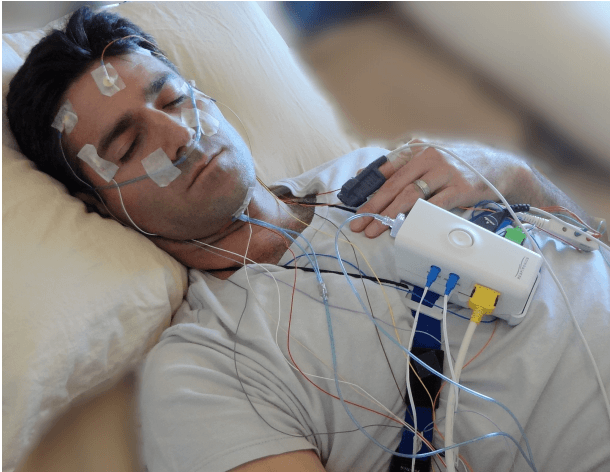

We sleep a lot shorter today than in 1900, on an average six and a half hours compared to the nine hours in those days. Too little sleep will, in the long run, effect your concentration, state of mind and metabolism. But when do you have a real sleeping disorder? How do you find out? A sleep tracker such as a Fitbit shows you how your breathing, heartbeat and your movement are, also at night. Thus, such a watch has a lot of potentials to assess a sleep disorder, according to researcher Pedro Fonseca. He will be awarded a PhD on 18 April with his research into the home monitoring of your sleep. He developed a method that accurately measures whether you are in a light, deep or REM sleep.
“For the first time, it has been proven that the sensors, in those trackers, can also be accurate enough for people with sleep disorders. So in addition to the research in a laboratory, we can follow people at home as well. In their own environment and for a longer period of time. “For the diagnosis of a sleeping disorder, you have to go to a sleep laboratory where they measure your brain activity with electrodes (besides eye movement, heartbeat, breathing and muscle tension). Sleeping is a brain activity and that is why you have to measure what the brain does, Fonseca explains. But such a lab only measures at a certain moment and rarely longer than one or two days.
“These watches are good for raising awareness about the importance of sleep and helping people get a better sleep routine.”Pedro Fonseca, Researcher at Philips
More and more people are gaining insight into their sleep patterns with, for example, a sleep tracker. A positive development, according to Fonseca. “These watches are good for raising awareness about the importance of sleep and helping people get a better sleep routine. But the interpretation of the data is still difficult and can have negative consequences. Can, they do not have to be bad.”
These trackers measure movement, heart rate, and breathing. “However, the link between these ‘surrogate’ parameters of sleep with the actual stages of sleep is not accurate enough to say anything about your sleeping pattern. It is possible that someone with a sleep disorder does not discover this and that someone who does not have a disorder starts to think that he has one. The former does not lead to the solution of the problem that causes it to persist. The latter can eventually lead to stress, which in turn can lead to a sleep disorder.”
Fonseca has been working for Philips Research for almost fourteen years, and in the past five years, he saw that sleep problems became an increasingly important issue. “Especially in the United States, but also here in Europe, sleep is an important ‘business’. Not only to diagnose sleep problems but also to support therapies such as sleep apnea. “Via Philips and Eindhoven University of Technology, he got the chance to increase the potential of everyday fitness watches. For this, he has developed a method, an algorithm, with which you can use these three parameters (movement, heartbeat, breathing) to show automatically and accurately whether someone is in a light, deep or REM sleep. He also investigated whether it is possible to follow people with a sleep disorder at home, in addition to the research in a sleep laboratory.
“Now that it has been proven that these sleep trackers have the ability to provide accurate information, we can take the next step. Together with students from the TU/e and the sleep institute Kempenhaeghe, we at Philips will investigate whether we can improve the diagnoses of sleep problems. For example, 85% of people with sleep apnea are undiagnosed. Further research should indicate whether we can use this technology to diagnose a sleep disorder. If that works, we can extend the existing devices to a home measurement where we can accurately say how bad the apnea is, how it varies from day to day and what the consequences are during the day.”
Pedro Fonseca will defend his dissertation at the Eindhoven University of Technology on 18 April.

